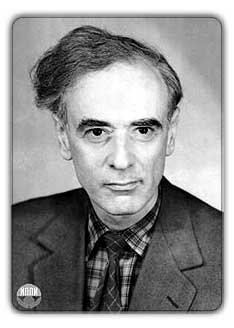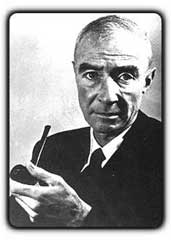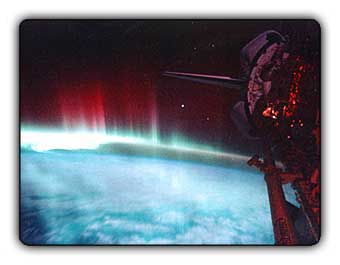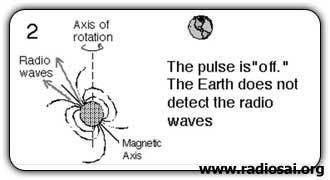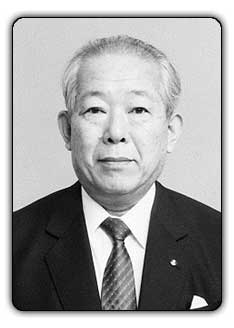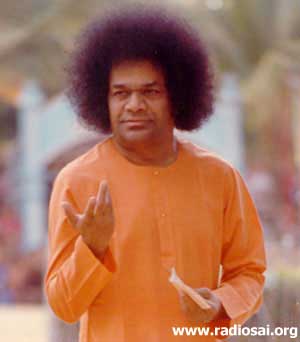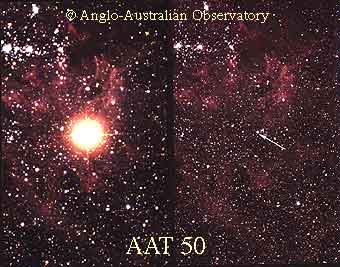 |
 |
 |
Volume
5 - Issue 04 APRIL 2007
|
|
MUSINGS from prasanthi nilayam IN QUEST OF INFINITY - 04
THE BIRTH AND DEATH OF STARS CONTINUES.... Loving Sai Ram and greetings. I hope you are ready to resume our journey from where we left off last time. On that occasion, I told you about how [some] stars finally end their life as a White Dwarf, and how young Chandrasekhar made an astounding discovery about the White Dwarf. To recall briefly, Chandra not only confirmed that quantum mechanics creates an outward pressure [called degeneracy pressure of the electrons] that prevents the stellar corpse from being relentlessly crushed by gravity [as Fowler of Cambridge had already pointed out] but added a new twist. According to Chandra, when the mass of the dead star equals 1.44 times the mass of our Sun, then even the degeneracy pressure due to electrons fails to prevent gravity from asserting itself. Thus, in Chandra’s analysis, a stellar corpse of mass 1.44 times the solar mass would be crushed to a point. That of course is ruled out by physics and so young Chandra merely ended by wondering what new physics would intervene to take over and prevent this undesirable collapse. It is here that Chandra’s discovery was stunning. As passing years have revealed, there is in fact wonderful physics that became revealed over the decades, and it is that story we shall be concerned with presently. A New Discovery: The Neutron The first step in going beyond Chandra was taken by Lev Landau, a brilliant Russian physicist, who in 1932 argued that electron degeneracy pressure would not and cannot work beyond a point, and the reason for that was relativity. Remember I told you that where Chandra went beyond Cambridge Don Fowler was in adding relativity to quantum mechanics, and that was what changed the whole story. What Landau was now saying was,
“Hey, hold on a minute. True, relativity is a must and sure it modifies the repulsive pressure the electrons generate, opposing gravitational collapse of the White Dwarf. But you know what? As the mass of the star increases, there are more and more electrons and in this situation of much higher electron density, you find that the electrons have to move really very fast, faster than light in fact. But Prof. Einstein would not allow that, which means that something else must happen, not discussed hitherto.” Landau argued that maybe some other particle of Nature, not known till then, might step in. Boy, was that a great guess! Almost close on the heels of Landau, a man named Chadwick in Cambridge [a student of Rutherford, the Titan of nuclear physics in England ] discovered a new particle named the neutron. The neutron was more or less of the same mass as the proton [an important component of the atomic nucleus] but slightly heavier. What was more important was that the neutron was electrically neutral, quite unlike the electron which carried a negative charge and the proton which carried a positive charge. Baade and Zwicky: From Supernovas to Neutron Stars So how could the neutron make any difference? That was pointed out by Fritz Zwicky. Zwicky was born in Bulgaria in 1898 but went to live with his grandparents in Switzerland at the age of six. In 1916, he enrolled in the University and earned a degree in theoretical physics. During this period, Zwicky met Einstein, Pauli and interestingly enough also Lenin [the Father of the Russian Revolution of 1918]. After getting his Ph.D, Zwicky moved to America and ended up in California where he teamed up with Walter Baade who had migrated from Germany. Both were at the Mount Wilson Observatory, and after studying bright novae inside galaxies made a remarkable observation. They wrote:
What Baade and Zwicky were doing is start where Chandra left off, and pick up where Landau gave a new opening. And by doing this, they “invented” the neutron star! Of course, all this was done with words, meaning that it was more of an idea that a proper theory. The proper theory came a few years later in 1939, almost on the eve of the World War, when Robert Oppenheimer [later to head the atom bomb project] and George Volkoff, who worked out in detail the physics of stellar collapse and thus gave a formal theory for the formation of a neutron star. Now you may say: “Wait a minute. Baade and Zwicky were studying novae or cosmic gas clouds and in that process came up with the idea of a neutron star. What precisely is the connection between the two that is, between a nova and a neutron star?” Good question and that is what we shall now consider. What I am going to describe is the picture that has emerged over decades, and an amazing picture it truly is! Let us consider a “dead” star, that is, a star that has ceased thermo-nuclear burn and is now collapsing due to the overwhelming force of gravity. This “corpse’ has a mass say 1.44 times the mass of the Sun. Remember this is the Chandrasekhar Limit, when physics of those times threw in the towel. Here is a blow by blow account of what happens at that limit, in the light of present knowledge.
To repeat all that in different words, in short this is what happens: 1. First there is a gravitational collapse, with all layers in the collapsing gas cloud moving inwards. The inner layers move fast while outer layers move slow.
2. The inner layers soon start moving with incredible speed, crushing the interior into a dense core, which is made up of neutrons. 3. The core is formed at such a terrific speed, its surface rebounds, meeting the matter from outer layers slowly falling inwards.
4. This generates a shock wave that travels fast outwards.
5. The outward travelling shock them meets the layers of nuclei in the outer regions and compresses that those layers.
6. This generates extreme heat, triggering thermo-nuclear reactions. 7. An explosion then results and a there is a bright flash, the supernova flash.
8. The two events, the formation of the neutron core and the simultaneous release of an intense neutrino burst, followed by the supernova explosion in the “outer” region are connected, being two aspects of one story; the formation of the neutron core is the ‘first’ chapter so to speak while the supernova explosion is the ‘second’ chapter. Very little time elapses between the two, though they are distinct aspects. I am sure all this would make your head dizzy, and so to help you, we have series of sketches that illustrate the process described here in words. Please take a good look at the text and the accompanying sketches. Hearing the Bell Toll for a Dead Star You may now say: “Nice story, but how do we know it is all true?” Fair enough, and that is where human curiosity and ingenuity show up brilliantly. The “story” I have just told has been put together from various events that happened in history, and maybe I should start in 1967 with a young lady named Jocelyn Bell, a student of astronomer Anthony Hewish of Cambridge, who was scanning the sky with a radio telescope looking for turbulence in stellar plasmas far, far away. On November 28, Bell recorded a strange radio signal; it was amazingly periodic, with a period of about 1.3 seconds.
She just could not make heads or tails of this incredible signal, because till then, there was no reason to expect a radio signal from outer space with such extra-ordinary regularity. Could it be that these were signals from some intelligent beings out there? No one knew, and these signals were simply dubbed LGM standing for “little green men”! Bell and her supervisor were not serious that these signals actually came from little green men, but a name had to be given, and this seemed a nice and intriguing one to give!
Intensive investigations followed and soon it was discovered that these signals actually came not from intelligent beings but from an astral object the like of which had never been detected before. This pulsating radio source of natural origin was named a pulsar. Since then, hundreds of pulsars have been detected in all parts of the sky. The question now became: “What are these pulsars?” From the short pulse duration and the rapid rate, it became evident that pulsars must be exceedingly small objects. The fact that pulsars were radiating radio signals meant that there must be moving charges in them. [According to the laws of physics, if there is electromagnetic radiation, then that means there must be moving charges.] And the fact the radio signals were coming in the form of short pulses meant that pulsars must be rotating fast, acting like lighthouses and emitting radio waves instead of light. The Pulsar - A Signal of Nebulous Origins All this is fine but why pulsars and how did they form? The clue to that came when a pulsar was discovered right in the middle of the famous Crab Nebula. This pulsar was pulsating at 30 times a second. I must here digress and narrate briefly the history of the Crab Nebula. This was discovered in 1731 by the British astronomer John Bevis. Charles Messier independently found it in 1758 when he was looking for the famous Halley’s comet; in fact, Messier first mistook this nebula to be a comet but later corrected himself. This gaseous object or nebula was christened the “Crab Nebula” on the basis of a drawing made by Lord Rosse around 1844, and since then the name has stayed. In 1921, J.C. Duncan of Mt. Wilson Observatory in California discovered by comparing two pictures of the Crab Nebula taken about 11.5 years apart that the nebula was in fact expanding. From the expansion rate, Duncan deduces that the nebula was probably born about 900 years earlier in some cosmic event. This backtracking 900 years is significant because it took one to around the year 1054 A.D. That story soon but first I must tell you that Knut Lundmark of Sweden also noted in 1921 that the Crab went back about 900 years and in fact its location was very close to where a spectacular astronomical event had been seen in 1054. This brings us to the story of 1054, which is remarkable tale in itself.
On 4 th July that year [4th of July by the way, happens to be America ’s Independence day! Was this God’s gift to America several hundred years before it was born?!] Chinese astronomers noted a “guest star” in constellation Taurus. At least four Chinese astronomers left records and one Japanese observer too has noted this sudden appearance of a “star” on that day in the sky. One astronomer, Yang Wei-te presented this report to the Emperor of China on August 27th:
According to the Chinese records, when it first appeared, the “guest star” was so bright it could be seen during daytime. When it was one week old, the remnant cloud was as big as the solar system and as bright as the Sun! For twenty three days, the luminous cloud could be seen during day time. After four weeks, the cloud was visible only during night. It kept getting fainter and fainter, and after 653 days, was no longer visible to the naked eye. It was that very same cloud that was later picked up by European astronomers viewing through the telescope, and subsequently named the Crab Nebula.
By the way, intensely bright though it was, the supernova explosion of 1054 A.D was not seen by Indian astronomers but then that is understandable because July is the peak of the South West Monsoon in India, when the sky is covered with clouds practically all the time. Interestingly, Arabian astronomers and observers in Europe also missed but not so the Indian tribes in Arizona. Carvings in caves discovered in the mid-fifties suggest that they too saw the event. This is based on the fact that in the carving, the crescent moon is very close to the star, which was the case for observers viewing from North America. Putting all this together, Baade and Zwicky in fact argued that there must be a neutron star in the Crab Nebula. But at that time, no one knew and no one could assert either. The discovery of the pulsar changed all that. People said, “Let us say that the Crab is a supernova remnant and that the bang occurred in 1054. If so, a neutron star must have been born then. Maybe the neutron star also acted like a pulsar. Let us look at the centre of the Crab to see if there is a pulsar there.” Many astronomers did, and lo and behold, there was a pulsar there! The Aurora Borealis of the Universe You might still shake your head say, “Wait a minute. I agree that the birth of a neutron star is signalled by a huge SN explosion that might sometimes even be seen by the naked eye [by the way, after 1054, there have been other sightings but more about that a bit later]. But how come the neutron star behaves like a pulsar?” Valid question and there have been detailed theoretical studies on that. There are the following considerations that form a part of the argument.
OK, like on earth, when charged particles on the surface of the neutron star fall into the magnetic poles of the neutron star, they emit electromagnetic radiation. This radiation could be in the form of radio signals, of light, and even x-rays.
All this is fine. How come the signals are emitted as pulses? Does that mean that particles fall into the poles, take rest, resume their falling and so on? Not at all! You see, due to angular momentum effects, the neutron star is spinning all the time like our Earth does, and our Sun does too. If you take that into account, you end up with a celestial lighthouse! Ever seen a lighthouse? It is always emitting light but since it is rotating, the light is always directed in one direction [two if you want to be technically fussy!]. Thus, an observer on earth would receive electromagnetic signals from a neutron star/pulsar only when the radiation beam sweeps the antenna; very similar to a sailor seeing the lighthouse only when the light beam sweeps across him.
I think we should pause and let all this sink slowly!
Wow, what a story! At this point, I must add some important additional facts. Super Facts about Supernovas
First about supernova sightings. I told you that the Chinese observed a great event in 1054 A.D. Any other such sightings? Yes, there have been many, and two significant and reliable ones are 1) by Tycho Brahe in 1572, and 2) Kepler in 1604. Both these are universally accepted. A third important one is that which occurred in 1987, concerning which I give some interesting facts separately. These days, astronomers regularly track and study SN explosions and using fancy telescope a large number have been detected. In fact, the study of SN is an active subject in itself that has led to many wonderful insights into the nature of our amazing Universe. Next, the amount of energy released in the SN explosion. Careful studies made on the recent SN 1987 A event give a good idea. In this, the sudden formation of the neutron core released an energy equivalent to that which would be generated if 1/10 th of the mass of our Sun were to be converted all into energy, and this happened almost instantly. For your reference, the mass of our Sun is about 2 x 10 30 kg; one tenth of that would mean 2 x 10 29 kg or 2 x 10 32 grams. Imagine that! Hiroshima was devastated when a mere 5 grams of matter was converted into energy. And now, we are talking of one tenth the mass of the Sun all being converted into energy in a fraction of a second! Mind boggling, is it not?! Now how is this energy released? Whereas our Sun releases energy in the form of electromagnetic radiation mainly, when a neutron star is formed, energy is released in the form of neutrinos. These neutrinos, as I told you earlier, are extremely tiny. They are as tiny as the electron but with much less mass; they therefore travel almost at the speed of light. You know how many neutrinos were released in the SN 1987 A formation/explosion? A cool 10 58 neutrinos! That number, by the way, means 1 followed by 58 zeros! We can’t even imagine such a number, can we?! That is Nature, all sorts of amazing things happen there. Detecting Neutrinos is no Small Matter You may ask, “How do we know that neutrinos are actually emitted?” We know because scientists have actually detected the neutrinos emitted by SN 1987 A! That is a fabulous story and I must give you the highlights of that. It all starts with a group of Japanese scientists who in collaboration with some scientists from America were involved in a difficult experiment to check if the proton would ever decay by itself due to radioactivity. From the point of basic Physics, this was a crucial experiment and many years and many millions of dollars were spent in setting this experiment underground in a place in Japan. The scientists waited and waited – the proton decay experiment is a very difficult one but the result was expected of vital importance to Physics, which is why so much effort went into designing that experiment. Of course, data collection was all automatic, done with computers, 24/7. One day during this long, long wait, the scientists heard that astronomers had detected a SN explosion on 23rd February. These scientists then said, “Hey, our detector can detect neutrinos. If neutrinos had been emitted, then some of them would reach the earth. Of those reaching the earth, some would hit our detector. And since our detector can detect neutrinos, some of those hitting our detector would actually have left their signatures behind. So why not we look for those tell-tale signatures?” That precisely is what they did. It was truly a needle-in-a-haystack kind of detection, but the effort seemed worth it.
I said earlier that about 10 58 neutrinos were emitted in the SN event. Of these only about 10 16 or ten-thousand trillion neutrinos hit the detector in Japan . And do you know how many of these 10 16 were actually detected? Just twelve, yes only 12, but the scientists were damn sure of every neutrino they had caught. Believe me, it is not easy to get the world to accept this kind of data, but the entire scientific world not only accepted all this but also applauded, including by awarding Masatoshi Koshiba the leader of the Japanese team with the Nobel Prize.
Incidentally, I urge you to take a look at Boxes 1 and 2, where some info about neutron stars etc. is assembled. God Allows Us to See His Cosmic Form You know, when I think about it all, I am simply wonder struck. On one side of it is God who has created the Universe in which all these wonderful things happen. On the other side, there He is in human form in Parthi, going about as if He is not aware of any of the mysteries in the Universe He has created. But do not be fooled by that great put on. Five thousand years ago, Arjuna was fooled in precisely this manner, with the Lord taking Arjuna for a ride for about seventy and odd years. But then, on the battlefield in Kurukshetra, Krishna said, “Arjuna, do not be fooled, and take a look at My Cosmic Form!” Swami blessed Arjuna and gave him special powers to behold the Cosmic Form – the famous Viswaroopa!
Yes dear reader, the road to Infinity that we are trekking along is filled with amazing scenes; but do not be surprised if the road eventually ends within us! But that comes later!! Meanwhile, thanks for your company and all the best till we meet again. Jai Sai Ram.
Dear Reader, did you find this article helpful? Do you have any experiences on this topic that you would like to share with us? Please contact us at h2h@radiosai.org mentioning your name and country. Thank you for your time. |
||||||||||||||||||||||||||||||||||||||||||||||||||||||||||||||||||||||||||||||||||||||||||||||||||
| You can write to us at : h2h@radiosai.org |
Vol 5 Issue 04 - APRIL 2007
|
Best viewed in Internet Explorer - 1024 x 768 resolution. |

